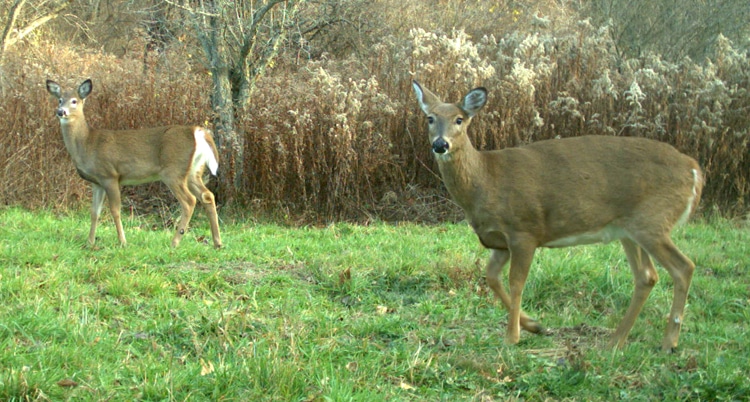Should I shoot a doe with fawns? Ask QDMAWe are often asked if it’s okay to shoot a doe with fawns. Kip Adams, a wildlife biologist and QDMA’s Director of Education and Outreach, answers that question in this week’s #AskQDMA video.
Posted by The Quality Deer Management Association on Tuesday, November 8, 2016
QDMA is often asked if it’s okay to harvest a doe that is traveling with fawns. I recently answered this question in the #AskQDMA video shown above.
Harvesting antlerless deer is sometimes necessary to keep deer herds in balance with the habitat. This ensures healthy deer herds, healthy habitat, and a bright future for a wide array of other wildlife species. In addition to the number of antlerless deer shot, the timing of harvest can also have a big impact on the herd and habitat. For example, when antlerless deer are shot early, say in October rather than December, the forage and browse they would have eaten during those two months can now be distributed to the remaining population. This can provide more food for other deer that can boost body weights and survival.
I am a big fan of shooting does early in the season, but some hunters are concerned that taking does early could decrease the survival rates of any orphaned fawns. This is a valiant concern, and here’s how I decide if the fawn is old enough to survive without its mother. Fawns can be weaned at 10 weeks of age (70 days). You can observe fawns nursing after this time, but I believe it is more of a bonding exercise than a nutritional requirement. In most of the whitetail’s range the majority of fawns are born much earlier than 70 days before hunting season.
In my home state of Pennsylvania, most fawns hit the ground in late May to early June. That means they can be weaned by mid to late August, and our archery season doesn’t open until late September or early October. This timing ensures most fawns are plenty old enough to survive on their own before hunting season arrives. However, some fawns are born later, and in more southern locales, fawns are born during numerous months. In these situations a little deer knowledge can help us make wise harvest decisions.
From a body development standpoint, fawns are functional ruminants well before the 70-day weaning and can therefore forage on their own much earlier. Fawns that are 45 to 60 days old are typically old enough to survive, although additional learning opportunities from mom are always advantageous. This is especially true in light of increasing predator populations in many areas.
Since fawns don’t wear name badges with their birthdates, a great way to determine in the field whether they’re likely old enough to survive is to look for the presence of spots. If I see a doe that has a fawn with spots, I’ll give her a pass. However, if I see a doe and fawn and the fawn’s spots are gone or are very indistinct, my heart rate quickens as I attach my release or adjust my safety in hopes the doe will soon occupy a place in my freezer.

The fawn (left) with this adult doe has grown completely out of its spots, is fully weaned, and is capable of surviving on its own if the doe is killed by a hunter.